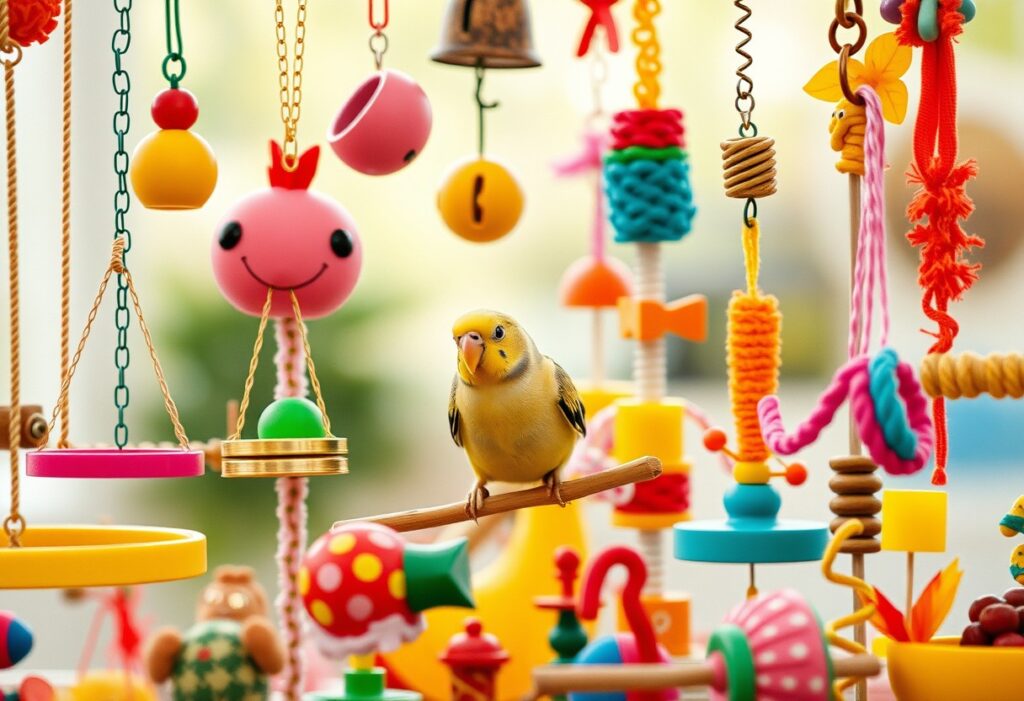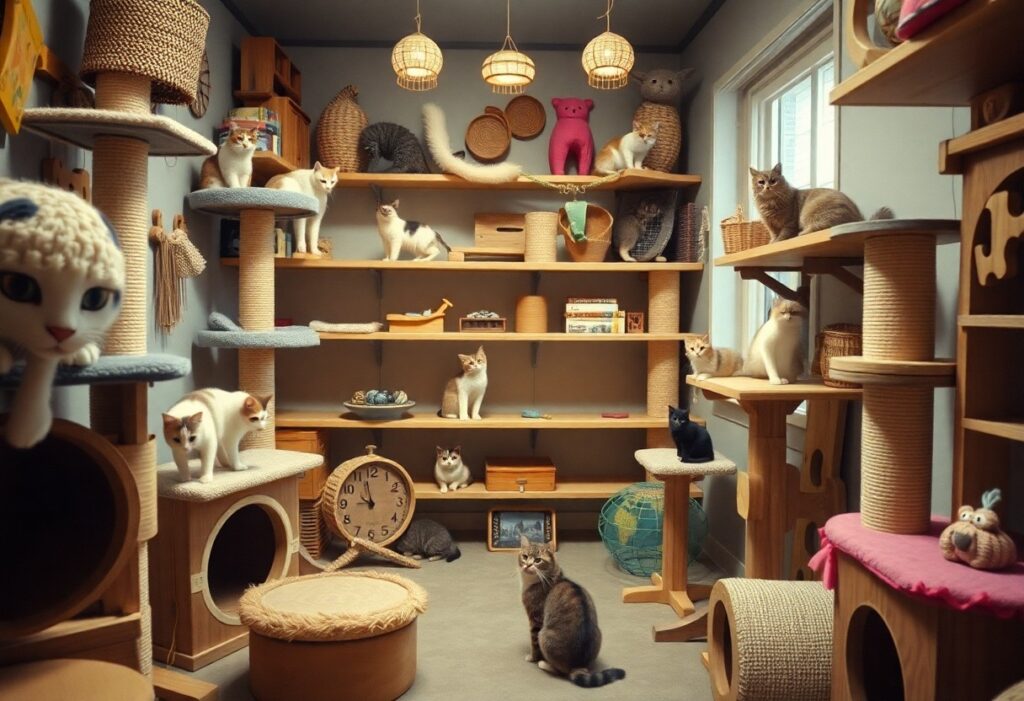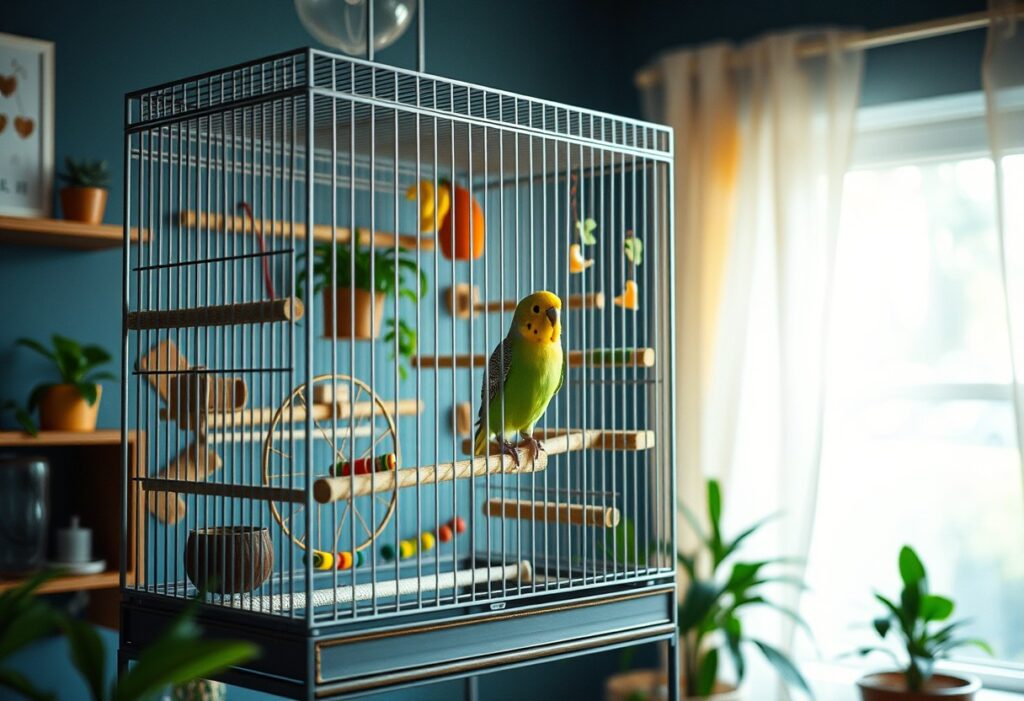Over time, you may have noticed that your feathered friend requires more than just food and a comfortable cage to thrive. Providing engaging toys is crucial for encouraging natural behaviors, preventing boredom, and promoting mental stimulation. In this post, you’ll discover the best bird toys available to keep your pet entertained and happy, while also ensuring their safety. Learn how to choose toys that stimulate play, encourage exploration, and support a healthy lifestyle for your avian companion.
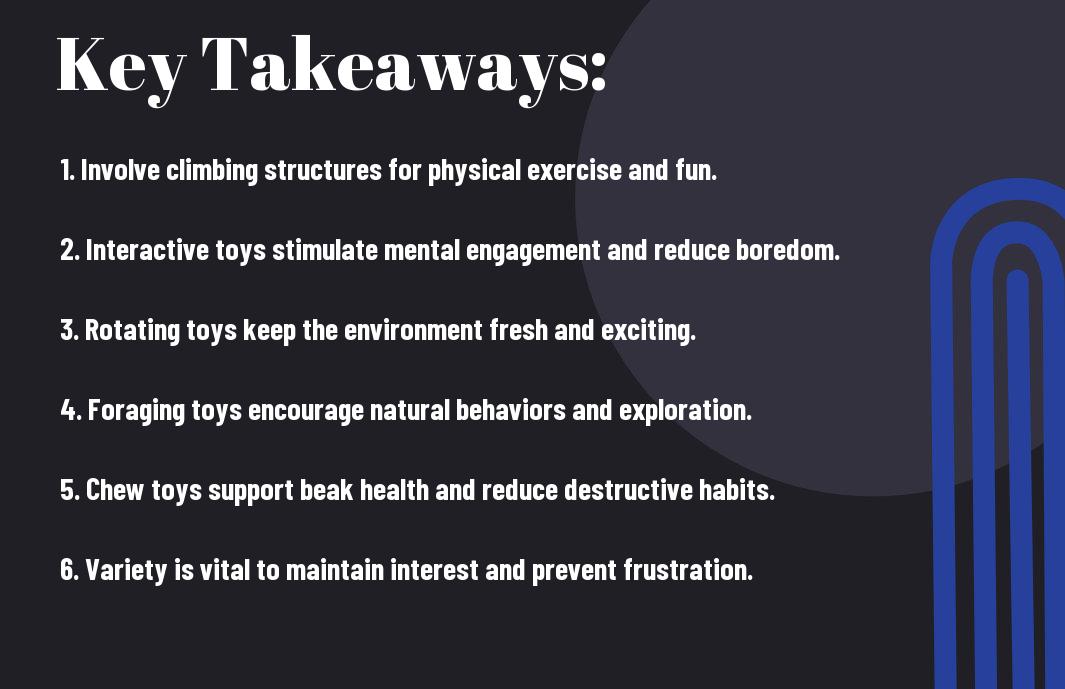
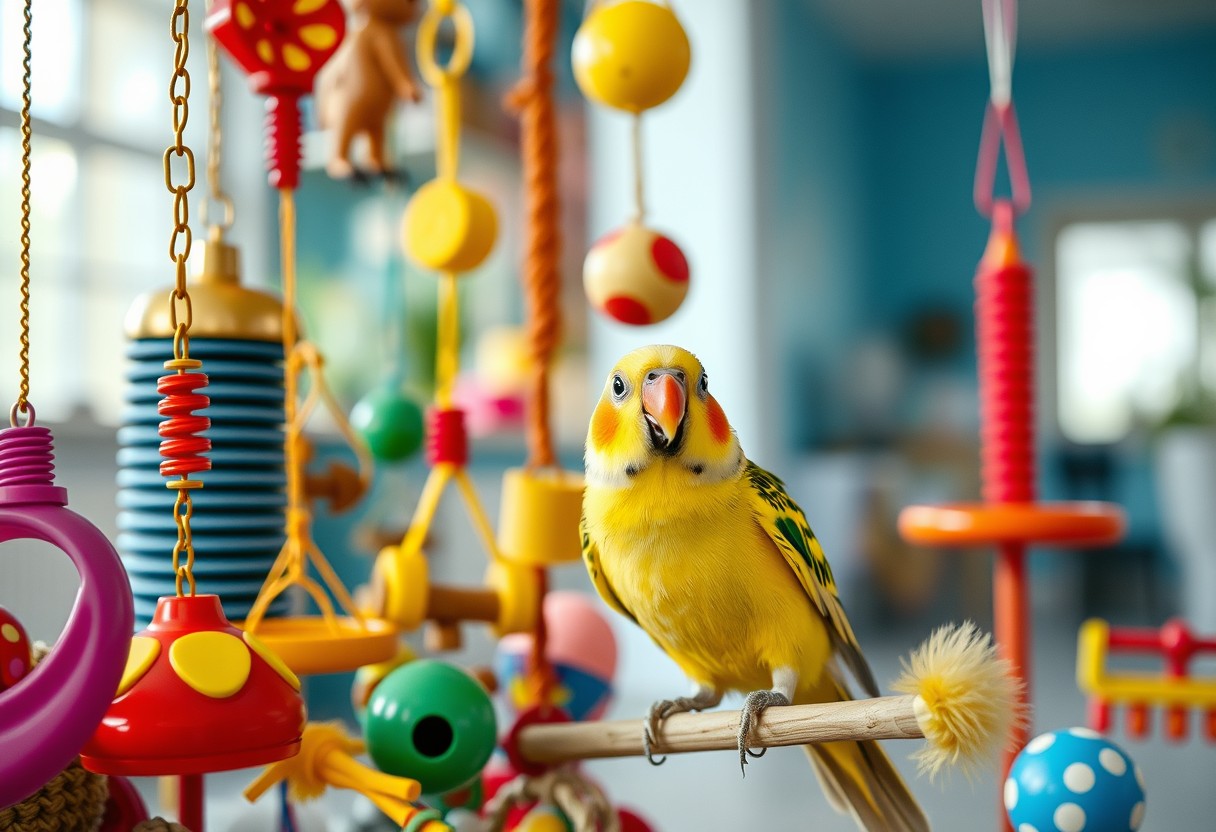
Understanding Bird Psychology
Before bringing a new feathered companion into your home, it’s crucial to understand their psychology to ensure they thrive as happy and healthy pets. Birds are naturally social creatures that require mental stimulation and interactive play to maintain their emotional health. Recognizing their needs can help foster a strong bond between you and your pet, allowing them to flourish in your care.
The Importance of Play
On a daily basis, offering your bird the opportunity to engage in playtime can make a significant difference in their overall well-being. Play serves as an vital outlet for a bird’s curiosity and intelligence. It not only alleviates boredom but also encourages physical exercise and problem-solving, two crucial components for a happy bird. Incorporating a variety of toys and activities into their daily routine can keep your feathered friend entertained and mentally stimulated.
Moreover, playtime can help you observe your bird’s preferences and behaviors, allowing you to tailor their environment to meet their specific needs. By recognizing what sparks their interest, you can enhance their experience and ensure they remain engaged. This understanding can ultimately lead to a more harmonious relationship between you and your bird.
Types of Bird Play Behavior
Birds exhibit a range of play behaviors that are vital for their emotional and physical development. You might notice your bird engaging in different activities that reflect their unique personality. Understanding these behaviors can help you provide a more enriching environment for your pet.
| Type of Play Behavior | Description |
|---|---|
| Object Manipulation | Birds often explore objects by chewing, tossing, or shredding them. |
| Foraging | Hiding food within toys encourages birds to search and problem-solve. |
| Social Play | Interactions with human caretakers or other birds foster bonds. |
| Physical Activity | Climbing, swinging, and flying are vital for your bird’s physical health. |
| Vocal Play | Many birds enjoy mimicking sounds, which can be a form of play. |
Types of play behavior can vary widely among different bird species and even individuals. Observing your bird during playtime can reveal much about their interests and preferences. You might find that they have a favorite type of toy, or perhaps they enjoy interactive games with you more than anything else. Identifying these preferences is crucial when selecting the right toys, as it can lead to more rewarding experiences for both you and your bird. Providing a safe environment to explore and engage in play will not only keep them entertained but can also reduce stress levels.
- Physical activity is crucial for health.
- Object manipulation enhances your bird’s problem-solving skills.
- Foraging fulfills their natural instincts.
- Social interactions strengthen bonds with you.
- Perceiving these behaviors in your bird’s playtime will help you better cater to their needs.
As you continue to research into understanding your bird’s psychology, keep in mind the significance of play in their lives. This knowledge will empower you to create an enriching environment filled with appropriate toys and activities, ultimately leading to a happier and healthier pet. By tailoring playtime to your bird’s needs and preferences, you can cultivate a fulfilling relationship that enhances both your experiences.
Types of Bird Toys
Any bird owner knows that keeping your feathered friend entertained is vital for their mental and physical well-being. Selecting the right types of toys can significantly contribute to your bird’s happiness and health. Here’s a breakdown of some popular types of bird toys:
| Type of Toy | Description |
|---|---|
| Chewing Toys | Perfect for birds that love to chew and nibble. |
| Climbing and Perching Toys | Great for encouraging exercise and movement. |
| Interactive and Puzzle Toys | Engages your bird mentally. |
| Foraging Toys | Provides an opportunity for natural foraging behavior. |
| Exercise Toys | Helps improve agility and strength. |
Chewing Toys
Chewing toys are imperative for parrots and other birds that have a strong urge to gnaw. These toys help to keep your bird’s beak healthy and trimmed. They often come in various materials, including wood, paper, and more durable composites, making them ideal for birds of all sizes. Chewing also serves as a form of entertainment, preventing boredom which can lead to behavioral issues.
When identifying chewing toys, ensure they are made from non-toxic materials. Avoid toys that contain harmful chemicals or treatments that could be dangerous for your bird. Always check for wear and tear, replacing them regularly to maintain a safe play area for your pet.
Climbing and Perching Toys
Climbing toys are fantastic for the physical health of your bird. These toys are designed to encourage your avian friend to move about, promoting exercise while also offering them a place to perch comfortably. Many climbing toys are constructed from natural wood branches, rope, or fabric, providing various textures for your bird to explore.
For birds living in smaller cages, climbing and perching toys can be particularly beneficial. They can climb to different heights, mimicking their natural behavior. This can prevent your bird from becoming lethargic and is excellent for their overall well-being.
For instance, you can create a climbing area with ropes and ladders that lead up to swings. Incorporating various levels and textures in your bird’s environment can stimulate their senses and curiosity, ensuring they stay engaged and active.
Interactive and Puzzle Toys
Toys that require your bird to think and solve problems can significantly enhance their cognitive abilities. Interactive and puzzle toys often include hidden compartments or mechanisms that require some effort from your bird to access treats or other rewards. This type of mental stimulation is crucial for keeping your pet entertained and sharp.
With regular interaction, you may notice an improvement in your bird’s problem-solving skills and a reduction in boredom-related behavior. It’s an excellent way to bond with your pet, as you can actively participate by hiding treats and watching them strategize.
Types of interactive toys can include sliding panels, levers, and puzzles designed specifically for birds, making playtime both enjoyable and beneficial.
Foraging Toys
Foraging toys encourage your bird to mimic natural foraging behaviors, which is a crucial aspect of their mental health. These toys often hide treats or food within layers of material, encouraging your bird to search and work for their rewards. This type of play allows birds to engage their instincts and keep them mentally stimulated, which is vital for their overall happiness.
To provide the best foraging toys, consider options that can easily be dispensed or loaded with your bird’s favorite snacks. Regularly changing the contents of these toys will keep your bird interested and engaged.
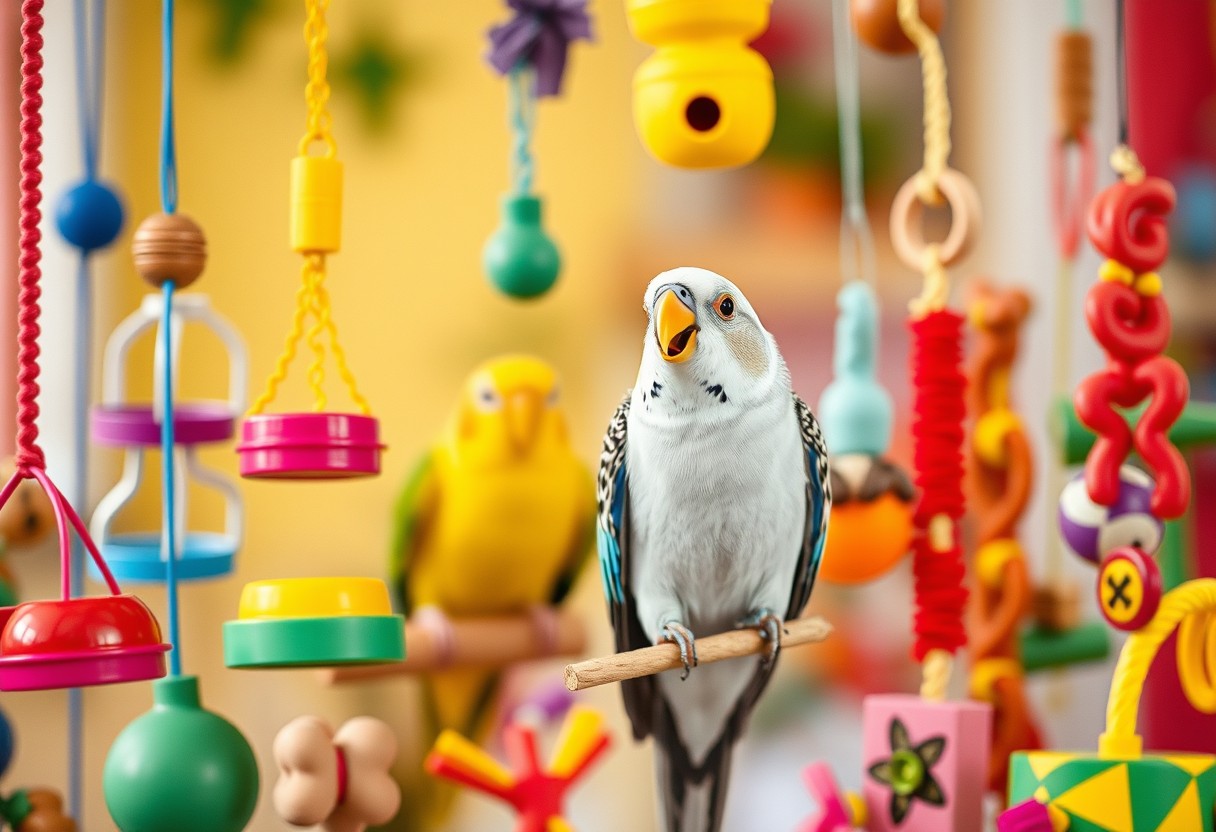
Factors to Consider When Choosing Toys
Unlike many pet owners may think, selecting the right toys for your feathered friend is not just about aesthetics or personal preference. Several key factors can significantly impact the overall enjoyment and safety of your bird’s playtime. Here are some important aspects to keep in mind:
- Size and species of bird
- Material safety
- Durability and maintenance
Size and Species of Bird
One of the first steps in choosing catering entertainment for your avian companion is understanding their size and species. Different birds have different needs when it comes to toys. For example, small birds like parakeets or finches require smaller toys that they can handle comfortably, while larger species like macaws or cockatoos need robust, larger toys that can withstand their stronger beaks. It’s crucial that the toys fit your bird’s size to prevent any choking hazards and ensure they can fully engage with them.
Furthermore, certain species have specific behavioral traits that affect their play preferences. Parrots, for example, are naturally curious and enjoy toys that challenge them mentally, while canaries may prefer simple toys that allow for gentle play. Make sure to research your bird’s species to identify toys that will keep them engaged and entertained.
Material Safety
For your pet’s well-being, it is critical to pay attention to the material safety of the toys you select. Birds love to chew, and toys made from unsafe materials can pose serious health risks, including toxic paint, sharp edges, or small parts that can be swallowed. Always opt for toys that are labeled as non-toxic, bird-safe, and made from natural materials, such as untreated wood, cotton, or organic materials.
Choosing toys also means looking for items that are free from harmful chemicals and heavy metals. You should be cautious about shiny finishes or bright colors, as these may often indicate the presence of harmful substances. It’s vital to conduct thorough research and read labels carefully to ensure that the toys you buy are actually safe for your bird.
Durability and Maintenance
Maintenance of your bird’s toys is another crucial aspect of keeping their playtime fun and safe. It’s important to invest in durable toys that can withstand the wear and tear from your bird’s beak and claws. Toys that break easily, can become a choking hazard or create sharp edges that may injure your pet. Durable materials such as stainless steel, hard plastics, and tightly woven natural fibers are excellent choices for longevity.
Another consideration is how easy the toys are to clean. Bird toys can accumulate dirt, droppings, and bacteria, making it crucial for you to provide them with clean playthings. Look for toys that are easy to disassemble and wash, ensuring that your bird’s environment remains safe and hygienic. Remember that regular maintenance prolongs the life of the toys and keeps your bird happily occupied!
Summing Up
Following this guide, you now have the imperative knowledge to choose the best bird toys that will keep your pet entertained and mentally stimulated. Be mindful of, birds are intelligent creatures that thrive on interaction and playtime, so investing in a variety of toys is crucial. Look for toys that promote climbing, chewing, and foraging to keep your feathered friend engaged. Regularly rotating the toys will also maintain their interest and excitement.
As you explore the multiple options available, consider your bird’s size, preferences, and specific needs. From colorful ropes and swings to puzzles and foraging toys, there is no shortage of choices to provide a stimulating environment for your pet. Ensuring their playtime is fulfilling not only contributes to their overall happiness but also strengthens the bond between you and your bird. With the right selection, you can ensure your pet enjoys an enriching and delightful life.
FAQ
Q: What are the benefits of providing toys for my pet bird?
A: Providing toys for your pet bird is imperative for their mental and physical well-being. Toys can help prevent boredom, which is important as bored birds may resort to destructive behaviors or self-mutilation. Engaging toys stimulate a bird’s curiosity and playfulness, encouraging natural behaviors such as foraging, chewing, and climbing. Additionally, interactive toys can serve as a source of exercise, helping to maintain their physical health. Overall, enriching your bird’s environment with varied toys leads to a happier and healthier pet.
Q: What types of toys are best for different species of birds?
A: The best types of toys for birds can vary significantly based on their species, size, and natural behaviors. For smaller birds like parakeets and canaries, lightweight, colorful toys with bells, small mirrors, and shreddable materials are great options. Medium-sized birds such as cockatiels benefit from foraging toys and climbing structures. Larger birds, like macaws and African greys, require durable toys made from tougher materials, such as wood or heavy-duty plastic, often designed to challenge their problem-solving skills. Always ensure toys are safe and appropriate for your bird’s size to prevent choking hazards.
Q: How often should I change my bird’s toys to keep them entertained?
A: It’s recommended to rotate your bird’s toys every few weeks to maintain their interest and anticipation. Birds can quickly become bored with the same toys, so introducing new ones or rearranging existing ones can keep their environment stimulating. Additionally, consider seasonal rotations, incorporating holiday-themed toys or seasonal colors to add variety. Inspect toys regularly for wear and tear to ensure safety; damaged toys should be replaced immediately. Pay attention to your bird’s reactions to ensure they are engaged and enjoying their playtime.
